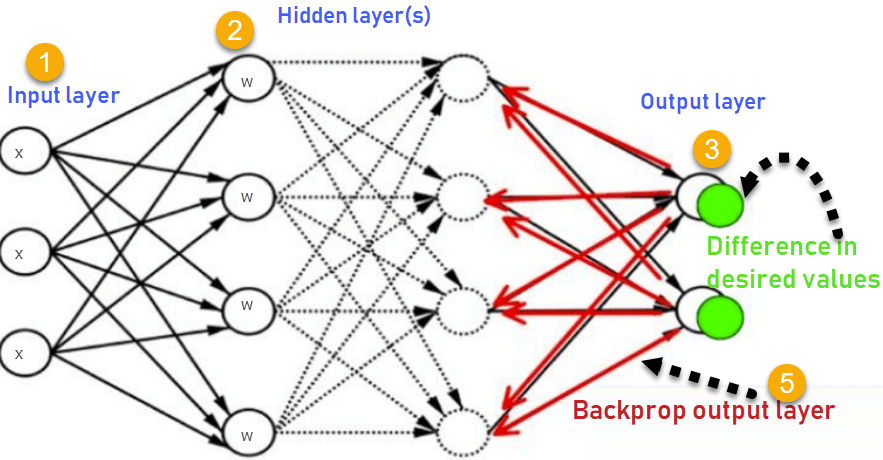
Information
- BPN (BackPropagation Neural Network) is a type of artificial neural network where the input signal is fed forward through the network, producing an output signal after passing through multiple layers of processing units, also called neurons.
- BPN employs backpropagation algorithm to adjust the weights of connections between neurons based on the difference between the expected output and the actual output, thereby minimizing the error or loss function.
- The backpropagation algorithm uses the chain rule to compute the gradient of the loss function with respect to the weights of each neuron, and updates them in the direction of steepest descent.
- BPN consists of an input layer, one or more hidden layers, and an output layer, where each layer contains one or more neurons that compute a weighted sum of the inputs and apply an activation function to produce an output.
- BPN can be used for both regression and classification tasks, depending on the type of activation function used in the output layer, such as linear for regression and sigmoid or softmax for classification.
- BPN requires a large amount of data to train the network, and the network may suffer from overfitting or underfitting if the number of hidden layers or neurons is not chosen carefully.
- BPN has been widely used in various applications, such as time series forecasting, image recognition, speech recognition, and natural language processing.
'Zettelkasten > Terminology Information' 카테고리의 다른 글
| RW (Random Walk) (0) | 2023.04.06 |
|---|---|
| SVR (Support Vector Regression) (0) | 2023.04.05 |
| MASE (Mean Absolute Scaled Error) (0) | 2023.04.03 |
| Classification (0) | 2023.04.02 |
| Clustering (0) | 2023.04.01 |


댓글